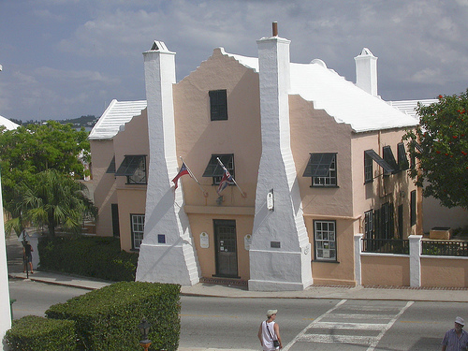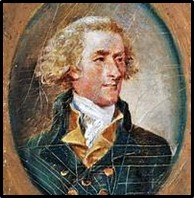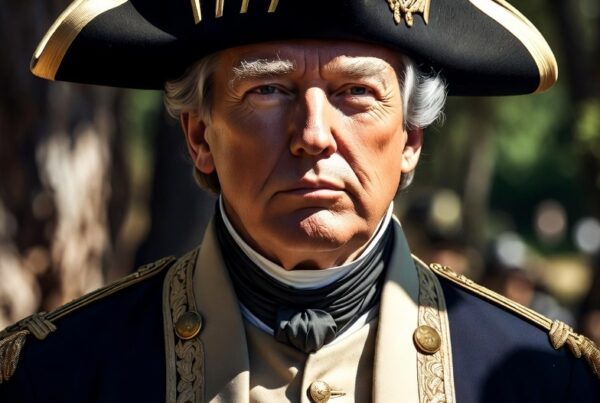A year before the 1939 film version of Margaret Mitchell’s Southern classic “Gone With the Wind” premiered at Loew’e Grand Theater in Atlanta, Georgia, producer David O. Selznick and screenwriter Jo Swerling flew to the island of Bermuda aboard a Pan-American “Clipper.” There they spent the next two months working to finish the script for their epic film about the antebellum South, the War of Secession and its sad aftermath.
Bermuda, however, was no stranger to the South. During the war, the island’s former capital of St. George’s was virtually a Confederate outpost. In St. George’s, the oldest building is the 1699 home of Samuel Day, the governor of Bermuda from 1698 to 1700. In the mid-nineteenth Century, the building had become the Globe Hotel in which such famous personalities as Samuel Clemens once stayed. During the war, the hotel was used by the Confederate government and in late 1862 it became the headquarters for the South’s blockade-running operations.
Those operations were initially headed by Commercial Agent John Tory Bourne and a year later, Ordinance Agent Major Norman S. Walker of Virginia, a friend of President Davis, was dispatched to supervise affairs there. The Globe Hotel also housed the offices of the Confederate Ordinance Depot under the command of Major Smith Stansbury of North Carolina.
Bourne was a successful Bermuda merchant from St. George’s whose father had been an officer in the Royal Navy. His wife was from South Carolina and before the war, he had acted as an agent for various shipping companies in Charleston and others parts of the South, as well as the British firm of Fraser, Trenholm & Company . . . all of which would be active in wartime blockade running. Bourne’s home on Rose Hill was also the scene of many receptions for visiting Confederate officials and Navy officers, as well as officers from the blockade runners.
Majors Walker and Stansbury had been classmates at West Point’s class of 1841, along with the man to whom they would report during the war, Brigadier General Josiah Gorgas, the South’s chief of ordinance. Both men had served in the U.S. Army but had resigned their commissions after the war with Mexico. Stansbury had been a banker in Baltimore until the War of Secession and Walker had operated a plantation in Jackson, Mississippi. Both left Bermuda for Halifax, Nova Scotia, before the end of the war, Walker and his family to escape a yellow fever epidemic that was sweeping the island and Stansbury to be treated unsuccessfully for a liver ailment.
While in Bermuda, Major Walker’s wife Georgiana gave birth to their fourth child at the Globe Hotel and used a Confederate flag as a canopy over her bed. As she wrote in a letter to her family in Petersburg, “Even if my child could not be born in the South, he would still be born under the Confederate flag,”
In the first month of the war, as an effort to strangle the Confederacy into submission, Lincoln ordered a thirty-five hundred mile naval blockade of all Southern ports on the Atlantic and Gulf of Mexico. To counter this, the Confederates initiated blockade-running operations from Nassau in the British Bahamas, as well as Havana, Cuba, and to some extent Halifax in Canada.
By the end of 1862, the mounting loss of blockade runners forced the South to turn to Bermuda lying less than seven hundred miles from the major ports of Wilmington in North Carolina, Charleston, Savannah and Ferandina on Amelia Island, the eastern terminus of Senator David Yulee’s Florida railroad. From 1863 until the end of the war, almost five hundred successful shipments were made to and from Bermuda, largely on newly-designed, low-profile iron ships that were faster and could carry more cargo and coal.
On Bermuda, besides Major Walker, his wife Georgiana and their four children, many other Confederates lived in St. George’s during the war and a large number of their former homes are still decorated with Confederate flags, as well as pictures of General Robert E. Lee and Confederate blockade runners. The Globe Hotel was finally acquired by Bermuda’s Historical Monument Trust in 1951 and ten years later, the Confederate Museum was established there.
Prior to the Confederate activities during the War of Secession, there had been a strong connection between Bermuda and the South dating back to the first settlements there and in Virginia. Up until the Seventeenth Century, Bermuda had been one of the few locations with no indigenous population. This changed in 1609 when the British ship “Sea Venture” and a group of settlers led by Admiral Sir George Somers and Lieutenant General Sir Thomas Gates that was bound for the Virginia Colony steered onto a Bermuda reef to avoid a violent storm. A year later, Shakespeare used the incident in the plot of his play “The Tempest.”
The group claimed the island for Great Britain and established an outpost which they named New London. They also constructed two vessels, the “Deliverance” and “Patience,” to continue their journey to Virginia, leaving three men behind to maintain the settlement. In 1612, Bermuda was made a part of the Virginia Colony and sixty settlers were sent from England to establish a permanent settlement on the island which they renamed St. George’s. Bermuda remained part of Virginia until 1624 when the Virginia Company was dissolved.
Over the ensuing years, strong personal and trade ties were maintained between Bermuda and Virginia, as well as with the British colonists in Georgia and the Carolinas. Up until the time of the American Revolution, about ten thousand people from Bermuda had gone to settle in Virginia and other parts of the South.
Like many Americans, a large number of Bermudians also desired independence and while they sympathized with those in the American colonies, they feared the power of Great Britain even more. Bermuda, however, depended on the South for much of its food and other daily needs which were traded mainly for high-quality salt. At the start of the Revolutionary War, America placed an embargo on all goods to Great Britain and its colonies, including Bermuda. Fearing starvation, the people in Bermuda used their connections with relatives and friends in the South to establish smuggling operations between the areas.
One of the first instances of this took place in August of 1775 when a group of people in St. George’s broke into the British powder magazine on Retreat Hill and made off with the more than a hundred barrels of gunpowder stored there. The barrels were loaded into small boats and taken to two American ships waiting offshore, the “Lady Patience” and “Charleston and Savannah Packet.” Arrangements for the raid had been made between Bermuda merchant Henry Tucker and his two sons in South Carolina who had contacted Benjamin Franklin on the plot. The gunpowder was taken to Boston where General Washington’s troops had invested the British forces there, but were running out of munitions. The stolen gunpowder helped greatly to turn the tide of battle, and the British were finally driven from the city the following March..
Due to Bermuda’s close ties with the American South and the island’s anti-British activities during the Revolutionary War, Bermuda was eyed with great suspicion by the British War Department at the start of the War of 1812. Therefore, several thousand British troops were sent to Bermuda and the Admiralty was ordered to relocate the Atlantic fleet there from Halifax, as well as rapidly constructing new dockyards and several forts at St. George’s and other locations on the island. It was from Bermuda that the British fleet made its raid on the city of Washington and bombarded Fort McHenry in Baltimore,
The War of Secession, however, was quite a different story, as the majority of people in both Great Britain and Bermuda sided with the Confederacy. In 1861, President Lincoln appointed Charle Maxwell Allen of Massachusetts as the United States consul to Bermuda, a position he held until his death there in 1888. While Allen came to greatly enjoy his stay in Bermuda, the war years were extremely difficult for him.
In letters he sent home, Allen wrote that he had no Bermudian friends during the war, was attacked in his office, often reviled in public and threatened to be whipped. Several hostile demonstrations were held around the Consulate in Hamilton and once the pole bearing the U.S. flag was cut down.
In his official dispatches, Allen reported on the large number of shipments going through Bermuda carrying cotton to England and munitions and other war matériel to the South. His reports also mentioned estimates of the profit from goods being shipped on the blockade runners and cited the case of one ship alone that had had been reported to have earned well over $800,000 (over twenty million dollars today) from contraband cargo on just three voyages.
Far more precise records of the shipments carried through Bermuda by the blockade runners were kept by two of the Confederate officials there, Commercial Agent Bourne and Major Stansbury in charge of the ordinance depot. Their reports on shipments and manifest lists from 1861 until the end of the war are contained in a number of ledgers and letter-books now in the hands of various individual in St. George’s and the St. George’s Historical Society. The accounts show that many of the millions of cotton bales that went to Europe had passed through Bermuda after President Davis lifted the Confederacy’s initial embargo on cotton exports. The ledgers also showed that the price of cotton had risen from ten cents a pound to almost two dollars a pound by 1865.
Furthermore, the Confederate records show that a large share of the more than a quarter of a million small arms and the hundred forty cannons from Europe that were sent to the South made their way via Bermuda. This also applied to the millions of percussion caps and the tons of high-quality gunpowder, saltpeter and lead, as well as the medical and other military supplies from Europe.
Towards the final months of the war, the South had become more self sufficient in the production of weapons and munitions, but still desperately needed food, medicine and other supplies from abroad, such as shoes and wool cloth and metal buttons for uniforms. Such items began to replace some of the military matériel in the Bermuda shipments and allowed the South to fight on as long as it did.
Several years ago, my wife and I made, what was for me, a nostalgic return sea voyage to Bermuda. Back in 1935, my parents and I had sailed there aboard the luxury liner “Queen of Bermuda” and spent six months on the island when my father, an executive of the National Hotel Management Company, was sent to establish new accounting and management systems at the Princess Hotel in Hamilton. While there, I attended the Saltus Grammar School in Hamilton, a typical English boy’s institution that had been founded in 1888. Part of the time we lived in St.George’s and on the return trip there seventy-five years later, Rieko and I were delighted that there had been so little change in the old historic town and port.
We, of course, visited the Confederate Museum at the former Globe Hotel but while the exhibits were excellent, we were most saddened to learn that a bit of America’s anti-Confederate “wokeness” had even made its way to Bermuda. In 1996, the National Trust gave in to the growing tide of political madness by taking down the Confederate flag that had flown over the entrance and changing the name of the facility to the pejorative “Rogues and Runners Museum.”







That was a very interesting read. So much history regarding the Confederacy outside of the continental US yet its not often discussed.
I have to add that it is an affront that the ignorant changed the name to “Rogues and Runners Museum”, an insult to the true history, the people and spirit of the times. After all, “Confederate Museum” was clearly so offensive (sigh). Bringing the honorable Confederate flag down that flew over its own museum adds insult to injury.
What strange and sad times we are going through as southerners.
I do try as a rule to take the high road, but I will digress for a moment. Maybe some Yankee museum names need to be contextualized accurately- maybe that would get their attention. Fight the battle on their ground instead of being on the offense all the time.
We can call it “The Tyrannical, Constitutional Shredding War Criminal’s Hall of Evil Doings”. Lincoln’s US empire flag should fly high and mightily at the entrance though (and not be brought down) so everyone can clearly see it for the guilt it bears.
What a wonderful story, and you’ve brought together many key elements from Shakespeare, to blockade running, to the fact Bermuda was once itself part of Virginia. I took my then 2.5 year old daughters to Bermuda in 2015, stayed at The Princess, and of course toured St. George. At that time, pre-BLM, while I don’t remember the museum name, I am quite certain the Stars and Bars was flying outside; perhaps not the battle flag. Inside, certainly nothing hid the connection to the Confederacy. They sell great mementos there, including impressions of the Great Seal of the Confederacy on foil. The story was something to the effect that the impression device never made it past Bermuda from London; the Seal imprinter itself had but was lost; but the London firm still had the mold so another was made. (I may be mixing things up; I have a picture if you have an interest).
Thank you for the most kind words. I am glad to hear that the “Stars and Bars” is again flying over the museum. I assume the National Trust heeded the many published complaints in a Bermuda paper concerning both the flag’s removal and the museum’s name change. My understanding is, however, that the latter remains in place. As to the the Great Seal of the C.S.A., that is a story for another time. While the seal itself made it to the South, the press remained in Bermuda and a British copy of the seal is now used there for the impression you have.
I didn’t know about the Bermuda Connection in any depth at all. Fascinating story! 700 miles of open sea, and the entire Eastern coast of the US…..braver folks than me, for sure.
Thank you for exposing a very interesting and little known aspect of the Confederacy, in Bermuda.
The story of the confederacy is so rich in history, and so little has been explored, but this is really changing in recent years.
Great article!!